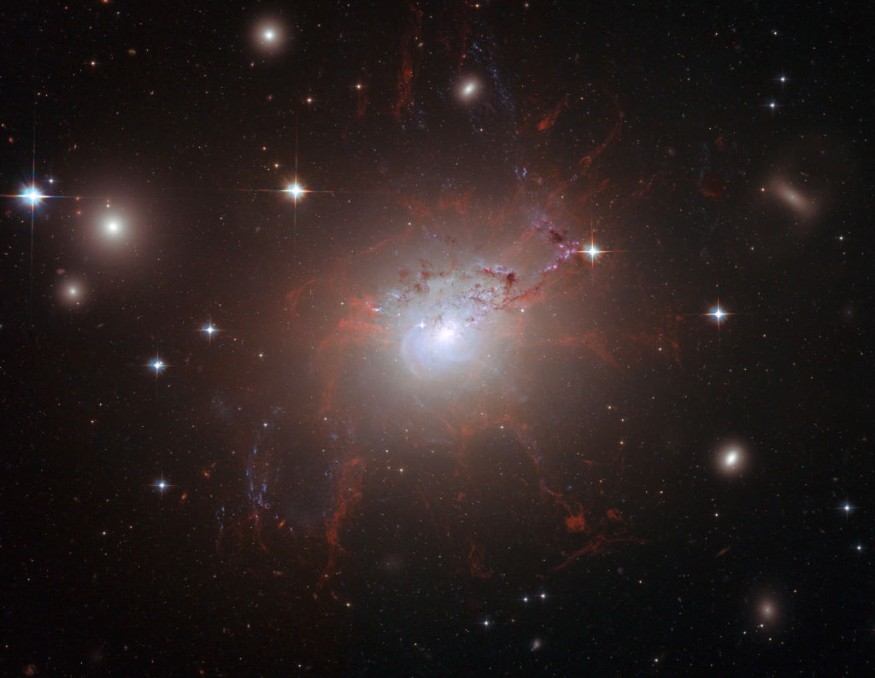A cosmic portrait was recently captured by the Wide Field Camera 3 of the NASA/ESA Hubble Space Telescope.
According to a SciTechDaily report, the captured images show a "stunning view of the galaxy NGC 4571, which lies roughly 60 million light-years from Earth in the constellation Coma Berenices.
Hubble Spies a Stunning Spiral in Constellation Coma Berenices https://t.co/TBbkxWYAlP
— SciTechDaily (@SciTechDaily1) March 21, 2022
Such a constellation, whose name translated as "Bernice's Hair," was named after an Egyptian queen who lived over 2,200 years ago. As majestic as spiral galaxies as NGC 4571 are, they are distant from the largest structures, which are very common to astronomers.
ALSO READ : Kepler Space Telescope Reveals About 300 Million Habitable Planets Possibly Exist in the Milky Way

Galaxy NGC 4571
NGC 4571 belongs to the Virgo cluster, which comprises over a thousand galaxies. Such a cluster is, in turn, part of the more massive Virgo supercluster, which also includes the Local Group, which comprises the Milky Way, the Earth's galaxy. Even more massive than superclusters are the so-called galaxy filaments, the largest-known structures in the Universe.
Essentially, this image comes from a large program of observations developed to produce a trove of combined observations from two great observatories, ALMA and Hubble.
The first mentioned, also called the Atacama Large Millimeter/submillimeter Array, is a huge telescope consisting of "66 high-precision antennas" high in the Chilean Andes, which observe together between radio waves infrared.
Such an observation enables ALMA to detect the clouds of cool interstellar dust, which gives rise to new stars. Meanwhile, the razor-sharp observations of Hubble at ultraviolet wavelengths would allow astronomers to identify the location of hot, luminous newly-formed stars.
Together, ALMA and Hubble observations offer an essential repository of data to astronomers who study the formation of the stars and lay the groundwork for future science using the NASA/ESA/CSA James Webb Space Telescope.
Hubble Space Telescope
Named to honor astronomer Edwin Hubble, according to the NASA website, Hubble Space Telescope is a huge, space-based observatory, which has revolutionized astronomy since it was launched and deployed in 1990 by the space shuttle Discovery. Scientists have used this space telescope to observe some of the farthest stars and galaxies yet seen, and the planets in the solar system.
The capabilities of Hubble have grown immensely in its more than three decades of operation. This is because new, cutting-edge scientific devices have been added to the device over the course of "five astronaut servicing missions." Through replacement and upgrading of aging parts, these servicing missions have immensely extended the lifetime of the telescope.
ALMA Observatory
ALMA Observatory is already irrigating the fields of astronomy in-depth 24 hours each day, 365 days each year. Scientists have foreseen record harvests, where radio waves or invisible lights accumulated by ALMA will be essential to the understanding of the Universe.
This space device aims to study the formation of stars, molecular clouds, and the early Universe, closing in on its primary objective, which is discovering the cosmic origins.
This space observatory comprises 66 high-precision antennas, operating on wavelengths of 0.32 to 3.6 mm. Its primary array comprises 50 antennas, each with 12-meter diameters, acting together as a single telescope, also known as an interferometer.
Related report about Hubble spying galaxies is shown on HubbleESA's YouTube video below:
RELATED ARTICLE : NASA's Webb Telescope's Powerful Capabilities Unveiled
Check out more news and information on Space on Science Times.












